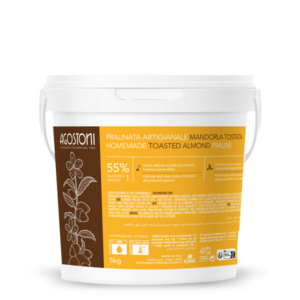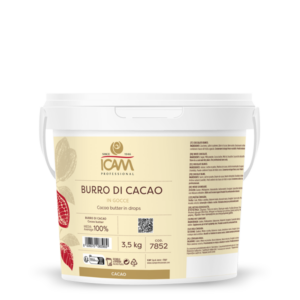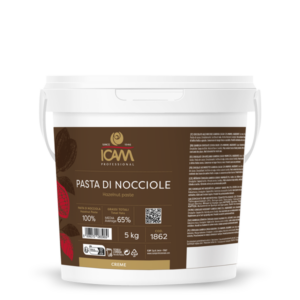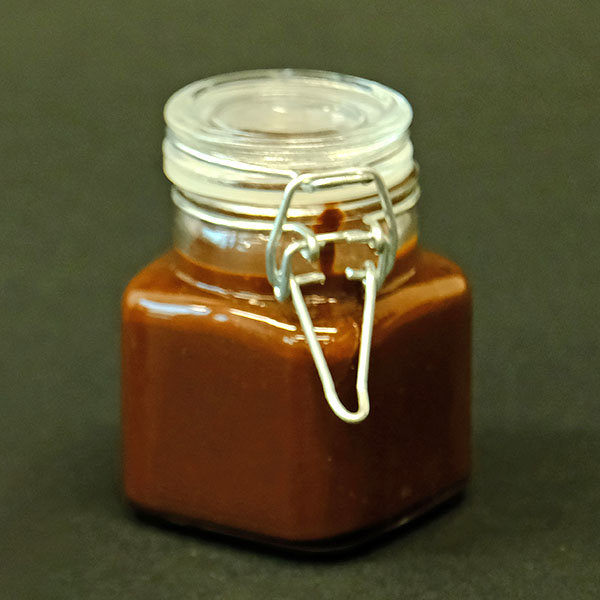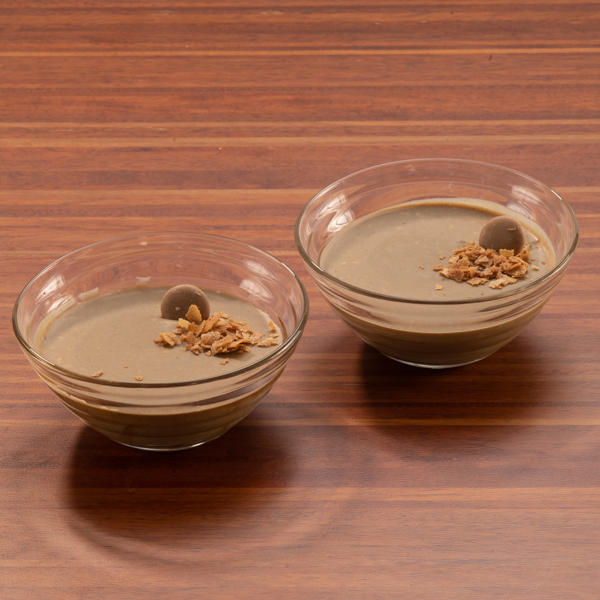
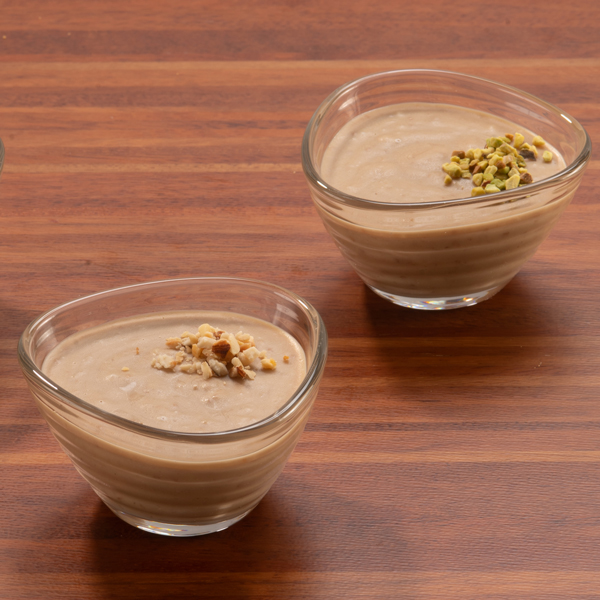
| 200 g | Artisan roasted almond praline |
| 50 g | Pure Almond Paste (Contains ground almonds) |
| 200 g | Artisan Pistachio Praline |
| 50 g | Pistachio paste |
| 25 g | Toasted Pistachio Nibs |
| 25 g | Toasted Almond Nibs |
| 200 g | Fine TGT Hazelnut Praline |
| 50 g | Hazelnut Paste |
| 25 g | Toasted Hazelnut Nibs |
| 100 g | Sunflower seed oil |
| 140 g | Cocoa butter drops |
| 6 g | Powdered cinnamon |
To make this delicious cream, use the stand mixer with the leaf attachment (K) to mix the three pastes: pistachio, almond and hazelnut. Proceed to mix, adding the sunflower seed oil and the tempered Cocoa Butter.
Clean the sides of the bowl and add the powdered cinnamon, and the hazelnut, almond and pistachio nibs. Mix, cleaning the sides of the bowl, and then finish off at a moderate speed.
Once the mixture is ready, use a small jug to pour the cream into the pots one-by-one. Leave to chill in the fridge at a temperature of +2°C+4°C to allow them to set and thicken (around ten/fifteen minutes should be enough). Finally leave them at room temperature for around 12 hours, then close them with their lids.
- When working the mixture, make sure to use the stand mixer and not the cutter, as the cutter’s movement will overheat the product and spoil the tempering of the chocolate.
- When making these creams, the final cooling down phase is one of the most important. This phase prevents the fats emerging, so it’s fundamental to allow the product the time it needs to cool down.
- Why use tempered chocolate? Because the cocoa butter stabilises the spreadable cream, making it more or less creamy.
- If you would like to make the cream softer and creamier without altering the flavour, you can add more oil. Because the oil is neutral, it won’t alter the flavour of the cream itself. If you wish to have a thicker cream then you can increase the chocolate content.
- To adjust the aromatic profile you may add spices and the powdered dried fruit as well as any fatty products (fatty pastes, essential oils…). You cannot use any water-based or hydrated products as these would cause the creams to separate.
- To sterilise the pots place them in the oven at a temperature of 130°C for 20 minutes, before leaving them covered with a sheet of baking paper until they cool.
- It’s important to add a seal in order to demonstrate that the product has retained its integrity in the transit from producer to consumer. The most common issue with spreadable creams is they turn rancid due to excessive variations in temperature. This makes it fundamental to ensure that the product is stored well at all times.
- How to best define the structure/consistency of the cream:
- If the structure is firm yet spreadable and we would like to lighten the consistency, we can add some oil to make it more creamy and soft. The amount to add needs to be evaluated according to how much we would like to soften the structure of the cream.
- If we have a spreadable, creamier and shinier consistency, we can be sure that the fatty content is higher. If we aim to increase the thickness of the cream and retain its spreadable properties, we can reduce the fatty oily content.


